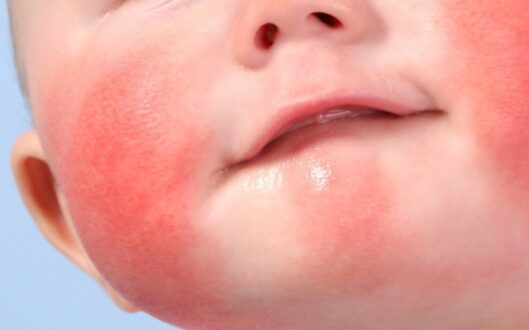Bleeding Diathesis Meaning, Symptoms, Causes, Treatment
Learn all about bleeding diathesis meaning symptoms, causes, treatment.
Bleeding diathesis refers to a tendency to bleed excessively. This condition is a result of mild and severe health conditions and circumstances. It can even be stimulated by a surgical procedure, whether medical or dental.
The bleeding diathesis can suddenly occur or can result after a surgical procedure.
Cushing’s syndrome (which is thinning of the skin) and the body’s inability to mend wounds naturally are two major factors in this condition.
Since it can be disguised with minor symptoms like bruises or an excessive nose bleed, it is important to stop the bleeding immediately. This disorder itself along with complications can lead to life-threatening conditions.
What is Bleeding Diathesis?
Bleeding diathesis is an increased susceptibility of bleeding due to coagulation defect, which may be genetic or acquired. Genetic include (e.g., Haemophilia, Glanzmann disease and von Willebrand disease) or acquired (e.g., scurvy, vitamin-K deficiency, leukaemia).
Bleeding Diathesis Meaning
Bleeding diathesis is the body’s abnormal inclination to bleed. The varying forms of bleeding diathesis can range from mild to severe. This disorder’s tendency to hemorrhage has a link to hypocoagulability, a condition having irregular and slow blood clotting. As a result, this can lead to a reduced production of platelets, which in turn results in excessive bleeding.
Bleeding Diathesis Symptoms
Commonly observed manifestations and clinical features of bleeding diathesis are:
- Red spots or petechiae
- Anemia which makes one feel tired or weak
- Spontaneous or recurrent bruising
- Large bruises from minor injuries or excessive and prolonged bleeding after an injury, surgery or dental work
- Prolonged nosebleeds
- Blood in stool or urine
- Bleeding after injections or a surgery
- Purpura and ecchymosis- In case of acute and chronic leukemia and vitamin k deficiency
- Bleeding into joints, muscles, and organs (indicates hemophilia)
- Bleeding gums
- Severe menorrhagia or menstrual bleeding causing anemia
- Heavy vaginal bleeding due to other reasons like endometriosis
Bleeding Diathesis Causes
Depending on the causes and etiology of the disease, these types of hemorrhagic diathesis are distinguished:
- Diathesis caused by a disorder of platelet hemostasis. This type includes such pathologies as thrombocytopathy and thrombocytopenia. Factors of development may be a decrease in immunity, kidney and liver disease, virus damage, chemotherapy treatment and irradiation with radiation.
- a disease caused by disturbances in the processes of blood coagulability – it can be a disorder of fibrinolysis, the use of anticoagulant and fibrinolytic drugs, various types of hemophilia, etc.
- impaired vascular wall permeability, caused by a lack of ascorbic acid, hemorrhagic angioectasia, or vasculitis;
- a disease caused by platelet hemostasis – von Willebrand’s disease, thrombohemorrhagic syndrome, radiation sickness, hemoblastosis, etc.
- The pathogenesis of hemorrhagic diathesis can be divided into several main sections:
- hemorrhages due to blood clotting disorder;
- hemorrhages associated with changes in the processes and organics of platelet formation, as well as with disturbances in their properties;
- Hemorrhages that develop as a result of vascular damage.
In a normal healthy body, the wall of the vessel can be partially permeable to gaseous and soluble substances. For elements of blood and proteins, the wall, as a rule, is impermeable. If there is a violation of its integrity, then a difficult process of coagulation is launched, aimed at preventing blood loss – so the body tries to prevent the emergence of a state that is life-threatening.
In itself, pathological hemorrhage usually occurs for two reasons – an increase in the permeability of the vessel wall and a disorder of the process of folding. Sometimes there is also a hypothesis that the mechanism of hemorrhage can be triggered by the increase in the properties of red blood cells passing through the vascular barrier with a slight dilution of blood, or with severe anemia. In what cases can this happen?
- Avitaminosis C (scurvy), rutin and citrine.
- Infectious diseases, sepsis, streptococcus, meningococcus, typhoid fever, etc.
- Intoxication (poisons, medications).
- The effect of heat.
- Allergic pathologies in the body.
- Neurotrophic disorders.
Bleeding Diathesis Treatment
A bleeding diathesis treatment is dependent on the underlying cause of the bleeding. It is vital to stop the blood loss first to prevent further complications and life-threatening conditions. Of the varying types of bleeding diathesis, one or more of the therapies used can be plasma exchange therapy, platelet transfusions, or anticoagulants. From these treatments, patients may experience anemia, cerebral hemorrhage, or soft tissue bleeding.
Other immediate treatments include prolonged bleeding from the nose with gauze and a packed dressing. Any genetic disorders leading to bleeding diathesis may require a psychological treatment with genetic counseling for management and any family planning.
 Health & Care Information
Health & Care Information 


